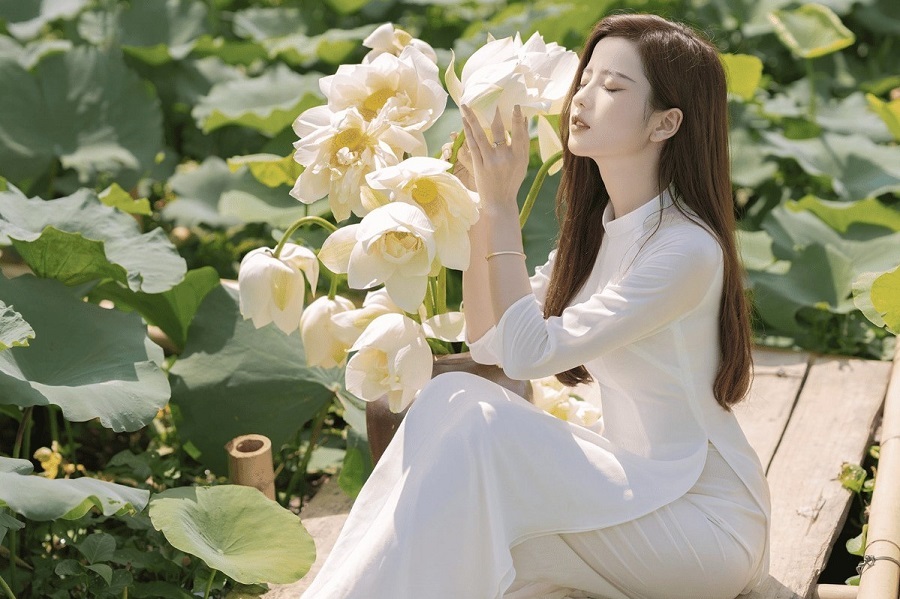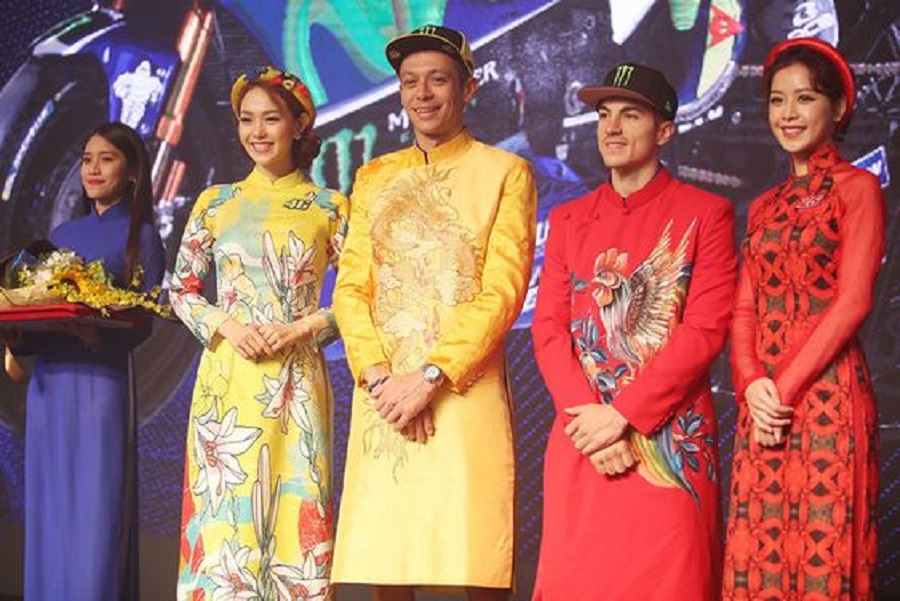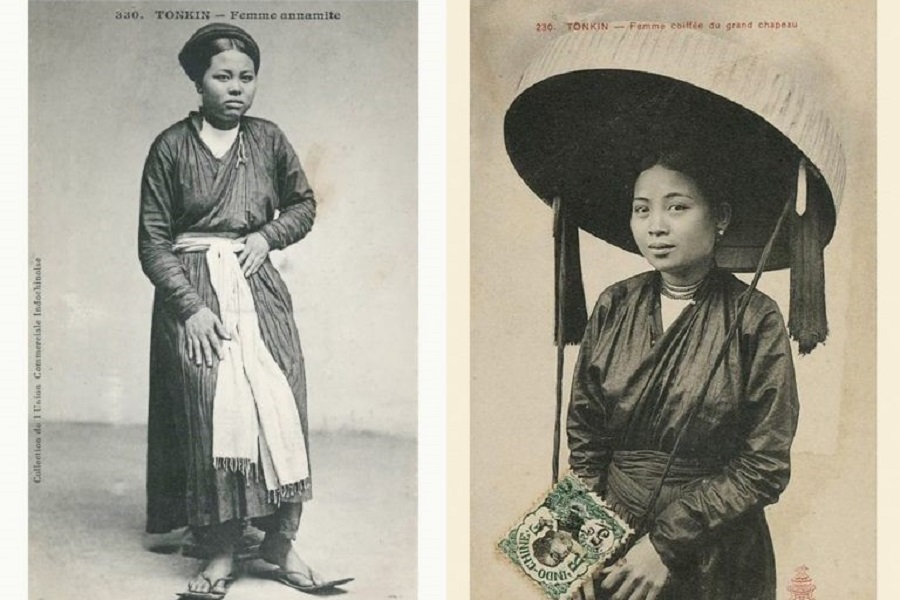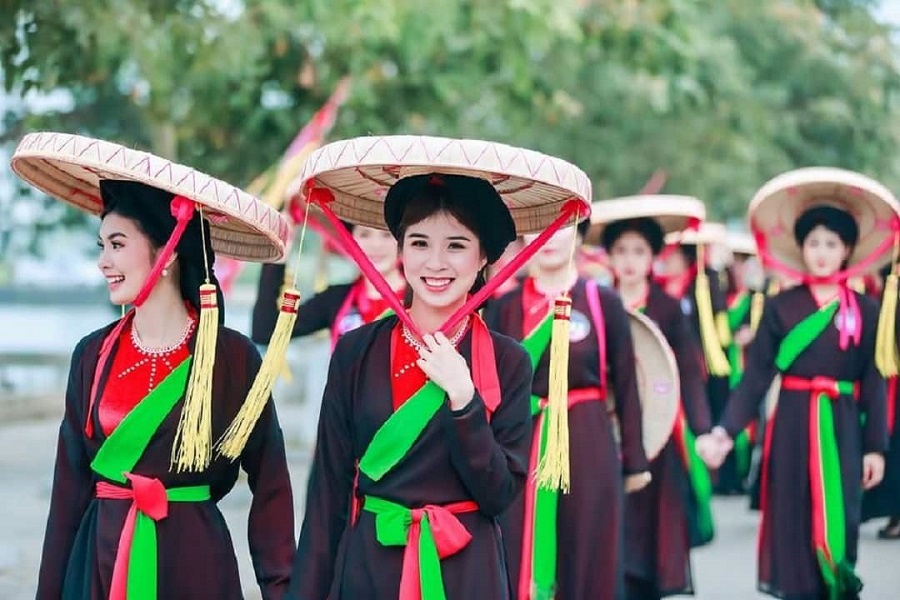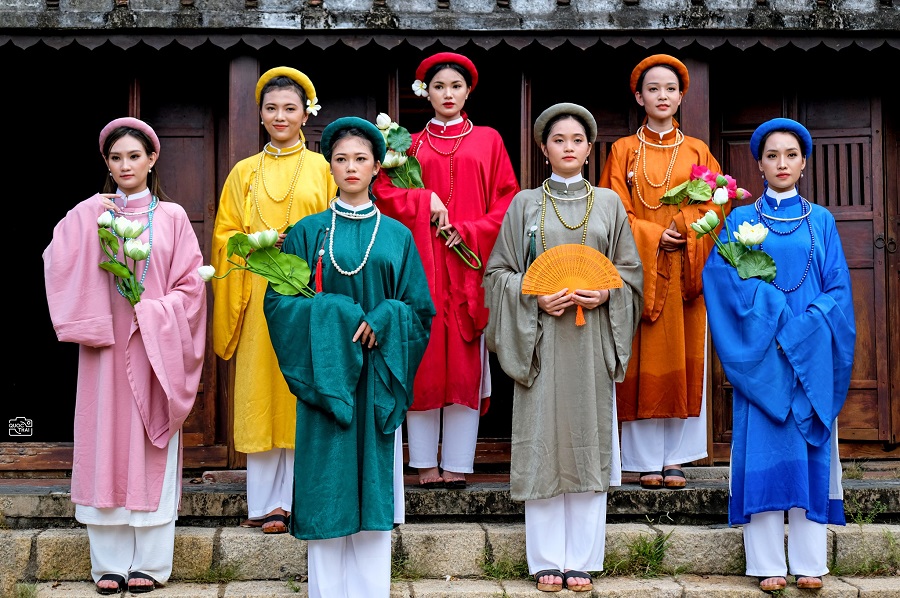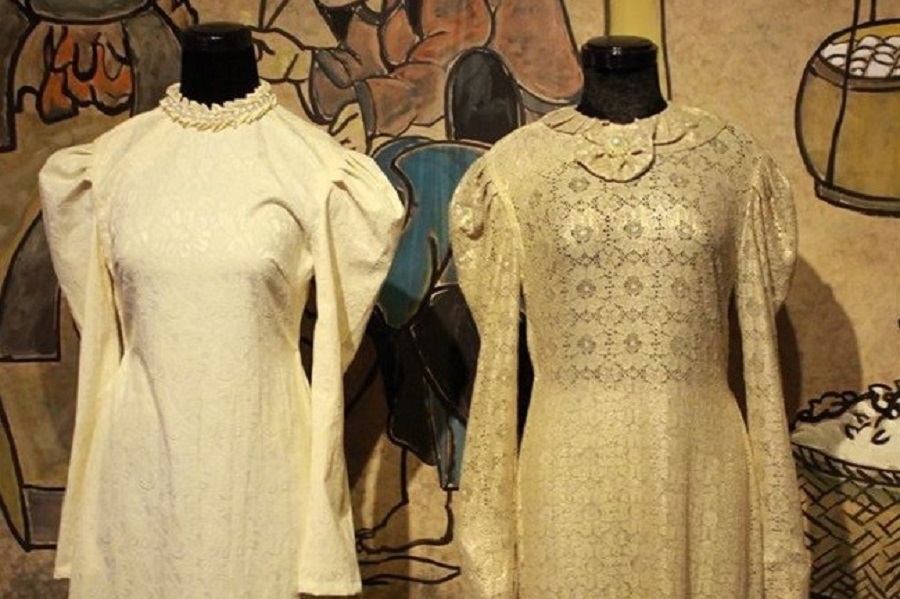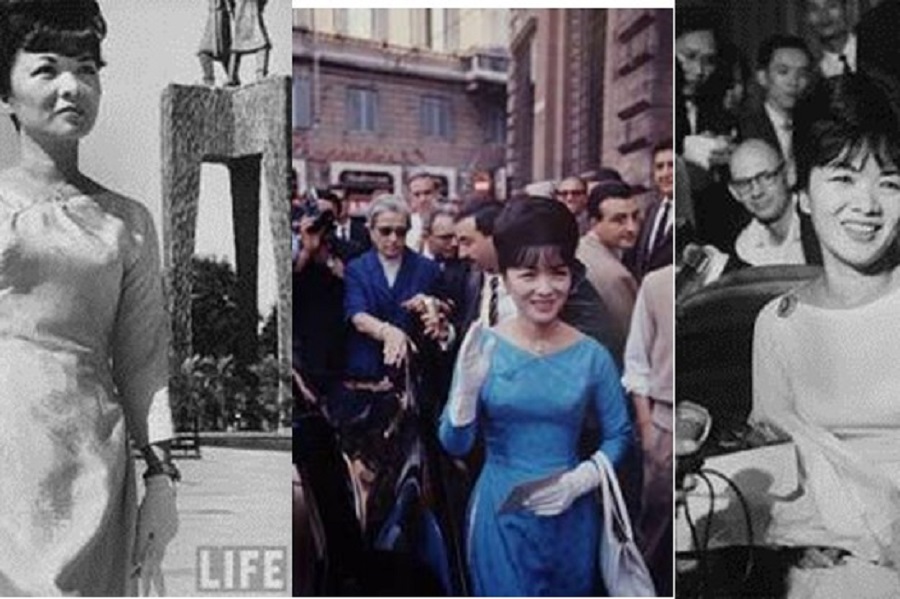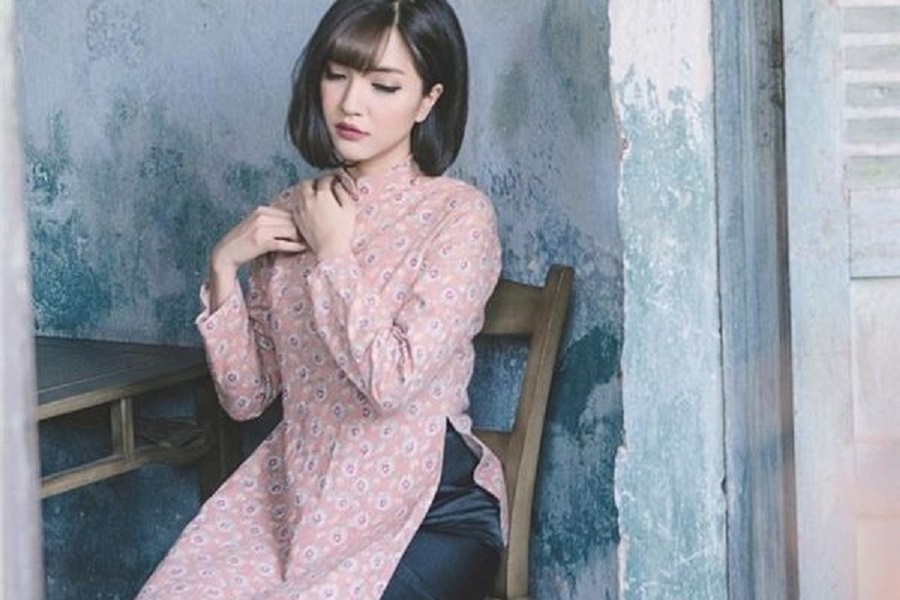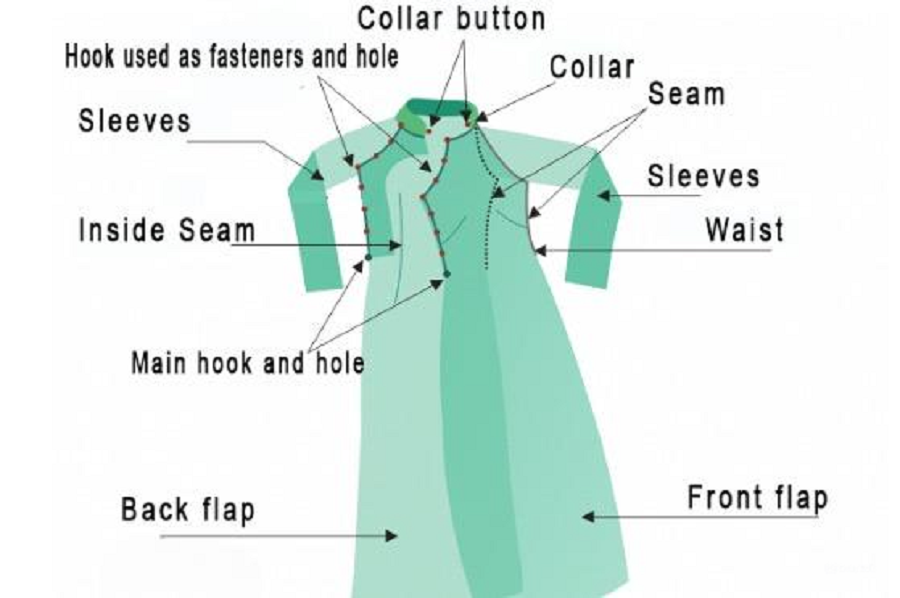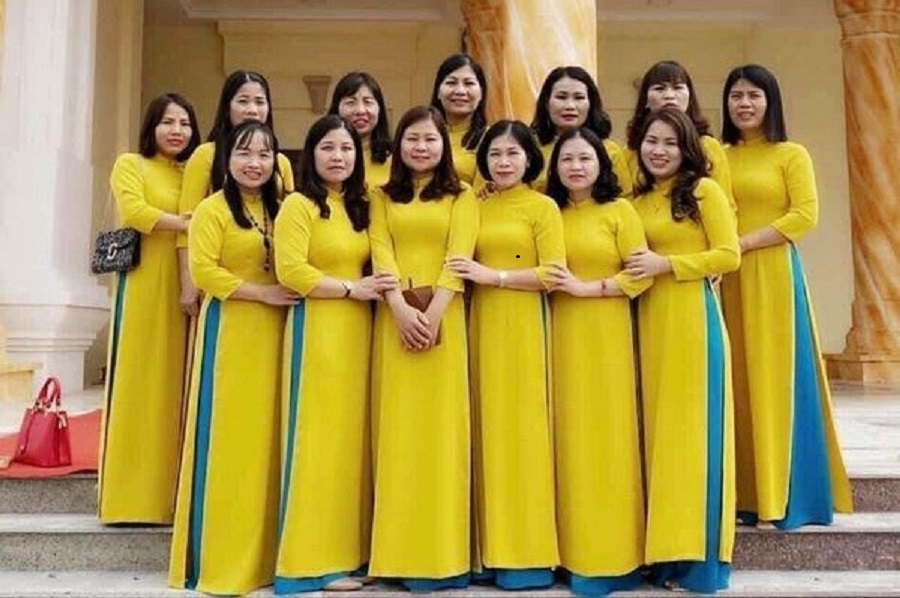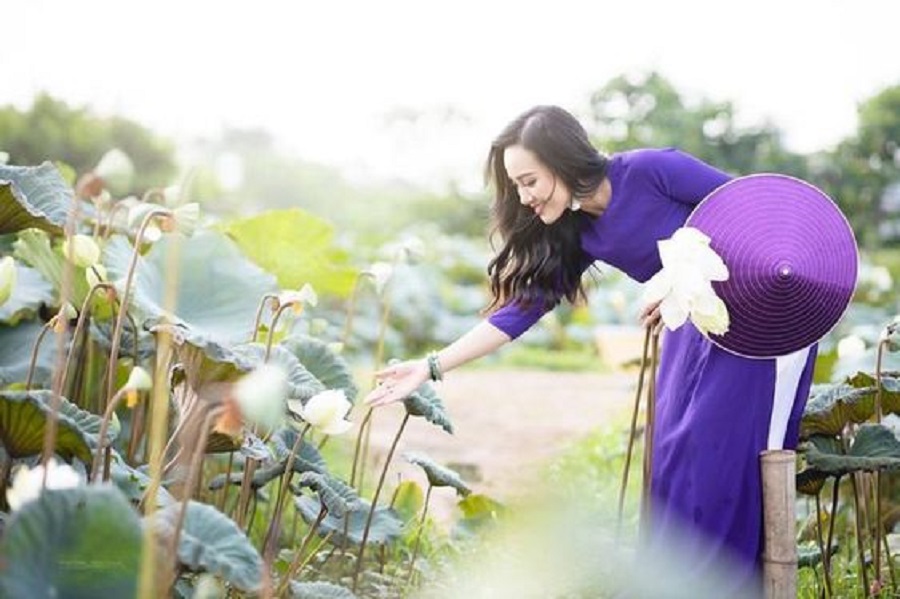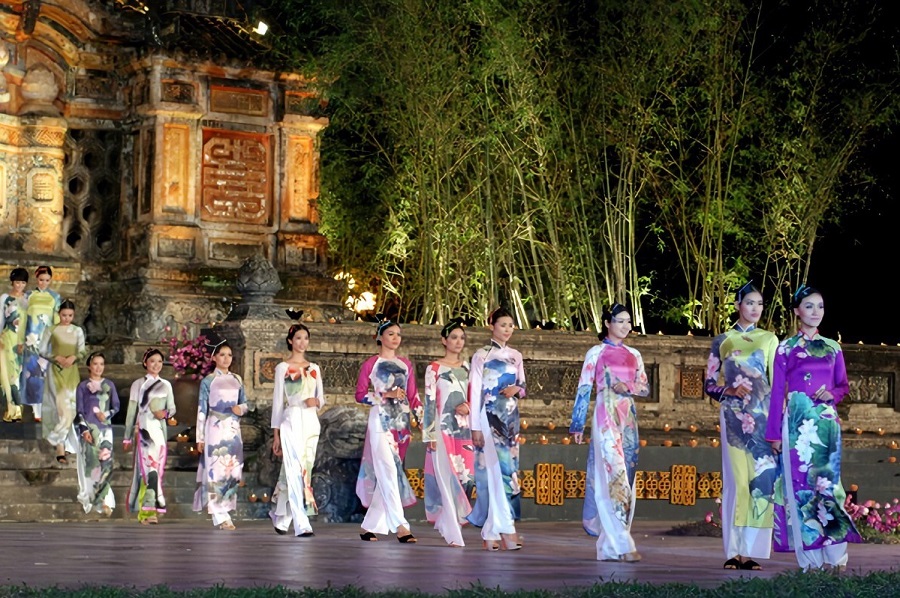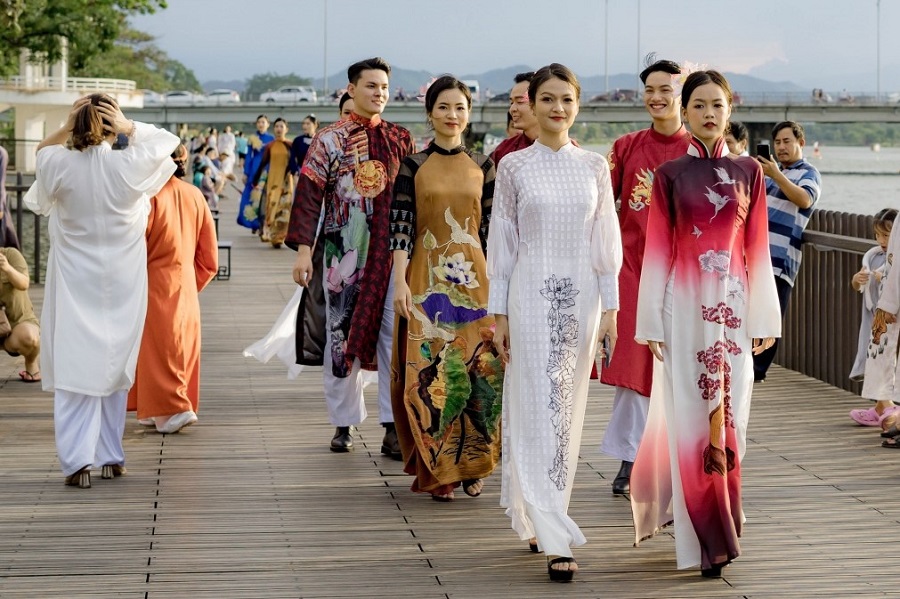Vietnamese long dress( ao dai ) is more than a garment; it’s a symbol of Vietnamese identity and cultural heritage.
Over the decade, despite the continuous changes to adapt to the times. Vietnamese long dress still retains an elegant, modest, and alluring quality that no other attire can match.
Let’s explore the Vietnamese long dress with Student Exchange
What Is The Vietnamese Long Dress?
Ao Dai Vietnamese is a costume that is tailored long, reaching down to the ankles, with a form-fitting design that accentuates the waist, creating a graceful and alluring beauty for the wearer.
Normally, this garment is worn by both men and women. But, the men’s version is less common and not as elaborate as the women’s version.
How To Say “Ao Dai” In Vietnam?
In Vietnam, the way to say “Ao dai” varies by region. In the South, it is synonymous with “ao yai,” while in the North, “ao zai.” is the way to speak.
The Story Of Vietnamese Long Dress
In 1744, during the division of Vietnam into Inner Land (Đàng Trong) and Outer Land (Đàng Ngoài), Lord Nguyen Phuc Khoat of Inner Land introduced a dress code. He requested his subjects to wear a front-buttoned gown paired with trousers. Therefore, the traditional long dress is more varied.
Origin And History Of Vietnamese Long Dress
The Origin Of The Vietnamese Long Dress
The origins of the ao dai Vietnam are believed to be traced back to the “giao lanh” the earliest form of the Vietnamese long dress.
This early version featured four flaps worn over an inner garment (plastron), paired with a black skirt and a colored belt, with the two front flaps left flowing freely.
The Evolution Of The Ao Dai
Tu Than Shirt ( the 17th century )
In the 20th century, women’s clothing needed to be practical and convenient for daily activities. As a result, the “Tu Than shirt” (Four-Part Dress) emerged.
This style of dress is based on the “Đối Khâm shirt,” which features two front flaps that overlap.
The front flaps can be separated and tied together, while the back flaps are sewn together to form a flowing skirt. Typically, the Tu Than shirt is worn with a plastron (a traditional undergarment).
Additionally, this four-part dress is often made in dark colors to facilitate practical tasks during daily work.
Ngu Than Shirt (1802-1819)
The Ngu than shirt (five-panel dress) has a similar design to the áo Tu than shirt. It includes a traditional small flap at the front, resembling an inner lining.
The dress has four panels that form two flaps, and the extra front flap serves as the fifth panel.
This style of áo dài was popular during the early 20th century, characterized by its loose fit, high collar, and a wide range of available colors.
Lemur Ao Dai (1934)
Despite its popularity until 1943, the lemur áo dài eventually fell out of fashion.
Le Pho Ao Dai (1950)
In 1934, based on the form of Lemur ao dai, the Le Pho long dresses were adjusted to accentuate the body of a Vietnamese woman.
this dress features more form-fitting, the shoulders are wilder, and the flap hemline extends to the floor, creating a graceful look.
Additionally, Le Pho Ao also restores the characteristics of the Tu Than dress such as the sleeves not being puffed, the closed neck, and the button on the ride side of the shirt.
Ba Nhu Long Dress (late 1958)
Ms Tran Le Xuan designed Ba Nhu Ao Dai in the late 1958s. This is an argument shirt because instead of a closed neck like many ao dai styles before, this traditional long dress has an open neck, or a low neck, which conflicts with the fine customer.
However, this is one of the most favorite ao dai currently because of its aesthetics, coolness, and comfort to the owner
Raglam Traditional Long Dress (1960)
in 1960, The ancient traditional ao dai had many wrinkles on both sides of the shirt. To fix it, Kim Dung tailor in Dakao( Saigon ) used the method of assembling raglan and it worked, becoming an effective solution.
With this assembly method, the sleeves are connected from the neck to the armpit along the two hips, not only surmounting the limitation of The old ao dai at that time but also creating the flexibility of the wearer. Laying the foundation for modern Vietnamese ao dai.
Chit Eo Ao Dai – Ao Dai With A Tight Waist (1960 – 1970)
In the 1960s, the development of corsets became popular. At that time, urban women with open minds believed that wearing a wide ao dai with a tight waist would become more fashionable, luxurious, and elegant.
Therefore, The long dress with the waist sewn tightly, the shirt wide, the chest raised, and the hem straight reaching the ankles became popular.
Mini Ao Dai ( 1960 – 1970)
In the late 1960s, The mini ao dau gained popularity among female students due to its comfort and convenience.
This skirt was narrow and reached just above the knees, while the top remained loose and uncinched at the waist, yet still tailored to follow the body’s curves.
Modern Ao Dai ( from 1970 until now)
After a period of quiet in the 1960s, The Vietnamese ao dai experienced a revival in the 2000s.
It was infused with new life through creative and innovative collections that explored different styles and experimented with various fabrics, breathing fresh energy into this iconic garment.
The Structure Of Vietnamese Long Dress
The main structure of Vietnan Ao dai dresses consists of 5 parts: sleeves, collar, two skirts, shirt body, and pants.
- Collar: The vintage Ao dai collar is normally high 4 to 5 cm. However, if you have a chance, you will see many other ao dai collars such as Heart collars, round necks, and U-necks, the collar is often decorated with pearls
- Bodice: the body of a Vietnamese long dress extends from the collar to the waist. This part was tailored to fit closely to the wearer’s body, with darts at the back and front waist
- Sleeves: The sleeves start from the shoulders and fit snugly around the arms, without shoulder seams. Áo dài sleeves are usually long, extending just past the wrists
- Long pants: Instead of pairing the traditional ao dai with a black skirt, women can now mix and match it with black pants or jeans. This adaptation lends a more modern and fashionable touch to the style in contemporary times.
- Hem: The ao dai has two hems: one in the front, and one in the back. Both hems extend below the knees.
Vietnamese Long-dress Fabric
- Silk fabric: This is one of the high-end fabrics in the process create Vietnamese long dresses. Thanks to the high gloss, soft, airy, and comfortable, women in Vietnam usually choose the Ao dai with these materials for their special occasions such as weddings, and holidays.
- Velvet fabric: Velvet fabric, known for its luxurious feel and effective heat retention, Ao dai in velvet fabric provides wearers with additional warmth in the winter.
- Voile Fabric: When wearing an ao dai made of voile fabric, you’ll experience its lightness, breathability, and modesty. Additionally, voan has a soft, flowing texture that imparts a feminine feel to the wearer.
- parements Fabric: This is a luxurious and highly stable material for ao dai. Furthermore, with its elegance and grandeur for the wearer, people usually use Vietnamese long dresses with brocade fabric on special occasions such as weddings and festivals.
The Color Of A Vietnamese Long Dress
The color of Ao Dai in Vietnam is always worth studying things. Each color is always a symbol with a different meaning
White long dress: White symbolizes purity and brightness, and it is a popular color for long dresses in Vietnam. Particularly on Mondays, many schools across the country are filled with girls wearing long white dresses as they head to their classes.
Pink: We can say pink is the color of love, and romantic. Those, who are wearing pink ao dai usually want to have charm, tenderness, and attention in their clothes
Yellow: If you want a color that represents elegance and prestige, then yellow ao dai is the choice for you. Yellow not only signifies freshness and vitality but is also a popular choice for many brides in Vietnam on their special day
Purple: When you see gentle women wearing purple ao dai, you must visit Hue. Here, during special occasions at historical sites, female tour guides in Hue greet tourists wearing purple ao dai.
The reason why Hue women choose purple as a traditional color is because it evokes stronger emotions. It conveys a sense of gentleness, modesty, and friendliness, yet also an air of elegance. The feelings that only woman in Hue could bring.
If you are curious about Hue – tourism land, You should consider Culture Pham Travel
Red: Red ao dai is always the top choice for many Vietnamese brides because they associate it with prosperity, happiness, and marital bliss. No other color seems more fitting than red. That’s why red ao dai is highly favored for wedding days.
Hue – Kingdom Of Ao Dai
According to the recently approved project ‘Hue – The Capital of Ao Dai,’ by 2030, Hue will establish a museum, exhibition center, and tailoring service for Ao Dai to serve tourists.
Additionally, they will complete the documentation for the traditional Hue Ao Dai craft and submit it to UNESCO for consideration as a representative intangible cultural heritage of humanity.
Furthermore, Thua Thien Hue Province is implementing various programs to promote the significance of Ao Dai in the region.
These initiatives include encouraging people to wear Ao Dai to work and ensuring their active participation in important events. Notably, there is a dedicated Ao Dai Week to honor the value of Vietnamese Ao Dai.
Conclusion
Vietnamese long dress is more than just ordinary attire; it symbolizes our culturally rich and artistic nation. Its elegant lines flatter both men and women, making it a cherished garment for people of all ages.


